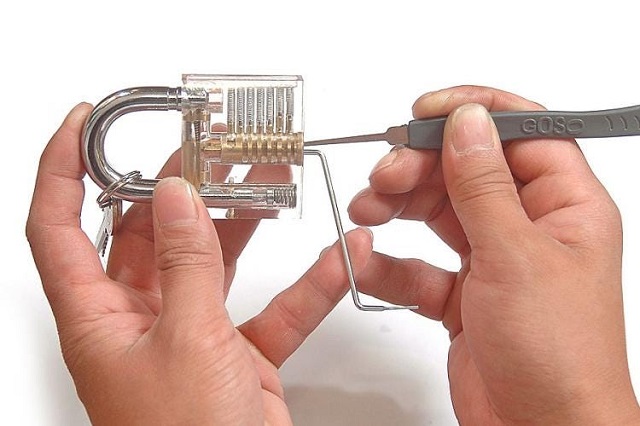Do You Know How Lock Picking Works
2024-06-06 08:58

Lock picking is a technique used to open a lock without a key by manipulating the internal components of the lock. It involves understanding the mechanics of the lock and using specific tools to align the lock's internal pins to allow the lock to turn and open. Here's a comprehensive guide on how lock picking works, focusing on the most common type of lock: the pin tumbler lock.
Understanding the Pin Tumbler Lock
To effectively pick a lock, one must first understand its internal structure. A pin tumbler lock consists of the following key components:
Cylinder: The main body of the lock where the key is inserted.
Plug: The part of the cylinder that rotates to unlock the lock when the correct key is used.
Pins: The pins are split into key pins (bottom pins) and driver pins (top pins). Each pin stack has a driver pin and a key pin.
Spring: Springs sit above the driver pins, pushing them downwards.
Shear Line: The boundary between the plug and the cylinder. When the pins are aligned at this line, the plug can rotate, allowing the lock to open.
How a Lock Works with a Key?
The key's notches push the key pins up, which in turn pushes the driver pins upwards. The notches on the key are designed to align the pins precisely at the shear line. When all pins are aligned at the shear line, the plug can freely rotate, unlocking the lock.
The Lock Picking Process
Lock picking involves mimicking the effect of the correct key by manipulating the pins using specific tools. Here's a detailed step-by-step process:
Tools Required
Tension Wrench: A small L-shaped tool used to apply rotational pressure to the plug.
Lock Pick: A tool used to manipulate the pins inside the lock.
Step-by-Step Guide to Picking a Lock
Insert the Tension Wrench: Place the tension wrench into the bottom or top of the keyway. Apply gentle rotational pressure in the direction that the key would turn. This creates a binding force on the pins.
Insert the Pick: Insert the pick into the keyway, reaching towards the back of the lock.
Locate the Pins: Using the pick, locate each pin stack by feeling for the slight resistance of the spring.
Manipulate the Pins: Start from the back pin (farthest from you) and work your way to the front.
Lift each pin gently with the pick. When you apply the correct amount of tension with the tension wrench, the driver pin will get caught at the shear line as you lift the key pin above it.
You might hear a slight click or feel the pin set in place when it reaches the shear line.
Set All Pins: Continue lifting and setting each pin one by one. The correct tension will cause each driver pin to remain above the shear line once lifted, allowing you to move on to the next pin.
Turn the Plug: Once all pins are set to the shear line, the plug will be free to rotate. Increase the pressure on the tension wrench and turn the plug to unlock the lock.
Factors Influencing Lock Picking
Lock Quality: Higher quality locks have more complex pin configurations and additional security features, making them more challenging to pick.
Skill Level: Successful lock picking requires a combination of knowledge, skill, and practice.
Tools: High-quality lock picking tools can make the process easier and more efficient.
Legal Considerations: Lock picking is a skill that should only be practiced on locks that you own or have explicit permission to pick. Unauthorized lock picking is illegal and considered a criminal act in many jurisdictions.
Lock picking is an intricate skill that involves understanding the inner workings of a lock and using specialized tools to manipulate its components. By applying the correct techniques and practicing regularly, one can develop the ability to pick basic locks. So you need to buy lock pick sets and carry them with you to solve the trouble caused by not bringing keys.
 Promotion: 5% Discount Code: 5vip
Promotion: 5% Discount Code: 5vip